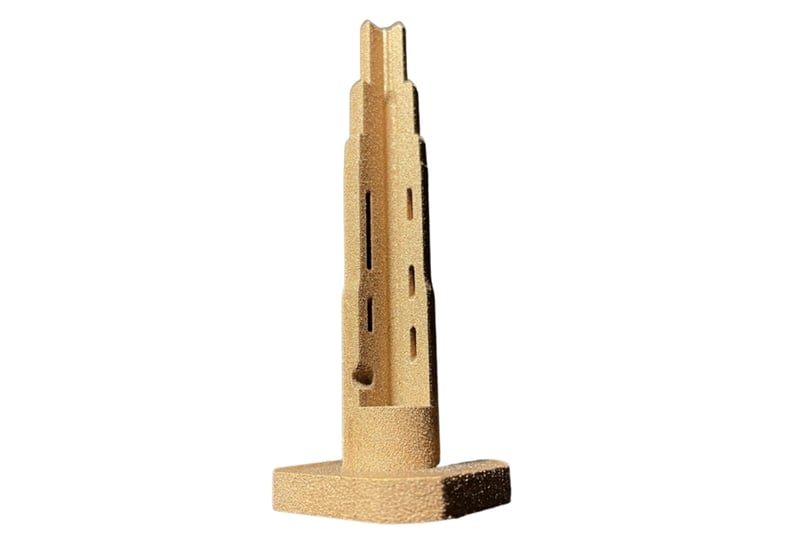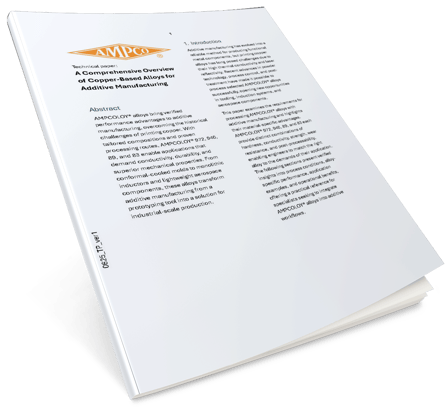Metal additive manufacturing has long promised efficiency and design freedom, but its real breakthrough comes from the materials behind it. Copper alloys are transforming this field by addressing challenges in heat transfer, durability, and precision that once limited industrial adoption.
Metal additive manufacturing has advanced rapidly in recent years, moving from isolated projects to broader industrial adoption. Its ability to build complex geometries and consolidate parts has made it attractive to sectors that demand precision and efficiency. Yet, the true value of the technology is determined not only by the printing process, but by the materials used.
Copper alloys are setting new benchmarks in this regard. Known for their thermal conductivity and mechanical strength, they address long-standing barriers in additive manufacturing, such as managing heat flow and ensuring part reliability under demanding conditions. Their use signals a shift toward engineered solutions that make metal additive manufacturing more competitive for real production environments.
The Development of Metal Additive Manufacturing
Metal additive manufacturing has matured from an experimental concept into an established industrial process. Techniques such as Powder Bed Fusion (PBF-LB) and Direct Energy Deposition (DED) now enable manufacturers to produce parts with greater accuracy, consistency, and mechanical reliability than in the past. Improvements in machine stability, powder handling, and process monitoring have all contributed to this progress.
Key advancements include:
- Improved process stability for consistent and repeatable results.
- Higher powder quality ensuring reliable printing and material performance.
- Advanced monitoring systems that document the entire construction process layer by layer to ensure maximum precision.
- Part consolidation that reduces assembly steps and potential weak points.
The impact is significant: components that once required multiple machining and assembly steps can now be produced as single, consolidated parts. This reduces production time, minimizes potential failure points, and opens opportunities for designs that are optimized for both performance and cost. For engineers, these developments mark a turning point in how additive methods can compete with, and in some cases even outperform, traditional manufacturing.
.jpg?width=1080&height=1350&name=New%20Instagram%201080x1350%20(10).jpg) Metal additive manufacturing can be used for complex components like this inductor
Metal additive manufacturing can be used for complex components like this inductor
Setting New Standards with Engineered Copper Alloys
While processes define how parts are made, the real breakthroughs in metal additive manufacturing come from the materials. Copper alloys are particularly important because they combine high thermal or electrical conductivity with mechanical strength, qualities that are essential for many demanding applications. These properties, however, also created challenges in the past. High reflectivity and rapid heat dissipation made copper alloys difficult to process with conventional additive techniques.
Recent advancements have changed this. With engineered copper powders designed specifically for additive manufacturing, these barriers are being overcome. Consistent particle size distribution, low oxygen levels, and tailored post-processing treatments ensure that printed components deliver both conductivity and durability. This sets new standards for what can be achieved, enabling copper alloys to move from experimental use to reliable, production-ready solutions.
How AMPCO Materials Improve Applications across Industries
The introduction of engineered copper alloys into metal additive manufacturing has opened opportunities across multiple sectors. In plastic injection molding, conformal-cooled inserts made from copper alloys improve heat transfer, reducing cycle times and enhancing part quality. In induction systems, additively manufactured inductors provide precise heating performance with fewer joints, leading to greater reliability. Aerospace and energy applications also benefit, as copper alloys enable components that combine strength with superior thermal management.
Key industry applications include:
- Plastic injection molding: Conformal-cooled inserts that improve thermal control and reduce cycle times.
- Induction systems: Precision inductors with fewer joints for better performance and reliability.
- Aerospace components: Parts requiring both heat resistance and mechanical strength.
- Energy systems: Heat exchangers and components where conductivity is essential.
Across these industries, the ability to consolidate parts, optimize geometries, and harness the properties of copper alloys results in tangible improvements: shorter lead times, longer component life, and reduced costs over the production cycle. For engineers, this means greater design freedom to create solutions that meet the performance demands of modern manufacturing.
 Demonstration of an Injection mold insert with internal cooling channels made using additive manufacturing
Demonstration of an Injection mold insert with internal cooling channels made using additive manufacturing
Final Thoughts
Metal additive manufacturing is evolving rapidly, and copper alloys are at the heart of this transformation. By combining high thermal conductivity with strength and durability, they enable designs and applications that were once out of reach for traditional manufacturing. From mold inserts to inductors and aerospace parts, AMPCO materials are setting new performance benchmarks across industries.
For engineers and technical professionals who want to continue exploring this topic, additional insights are available through the AMPCO Academy, where articles and resources cover the latest developments in materials and applications. Readers can also gain deeper knowledge by downloading our latest technical paper "A Comprehensive Overview of Copper-Based Alloys for Additive Manufacturing" which provides detailed data, processes, and engineering perspectives.



